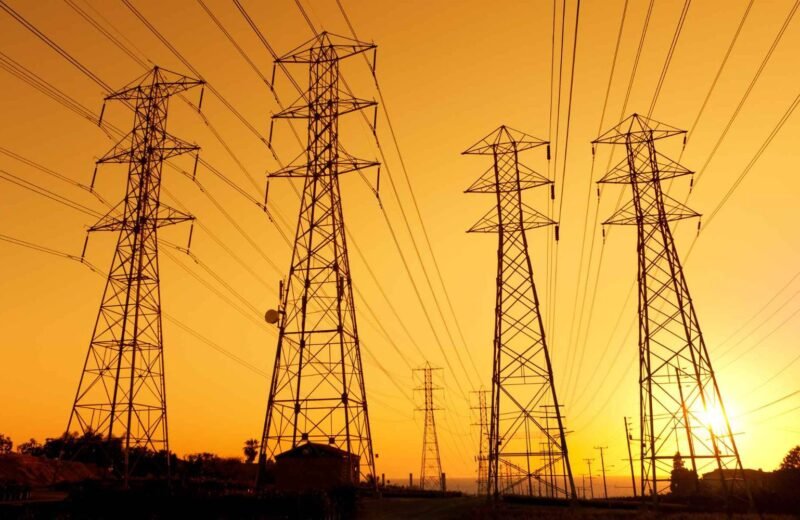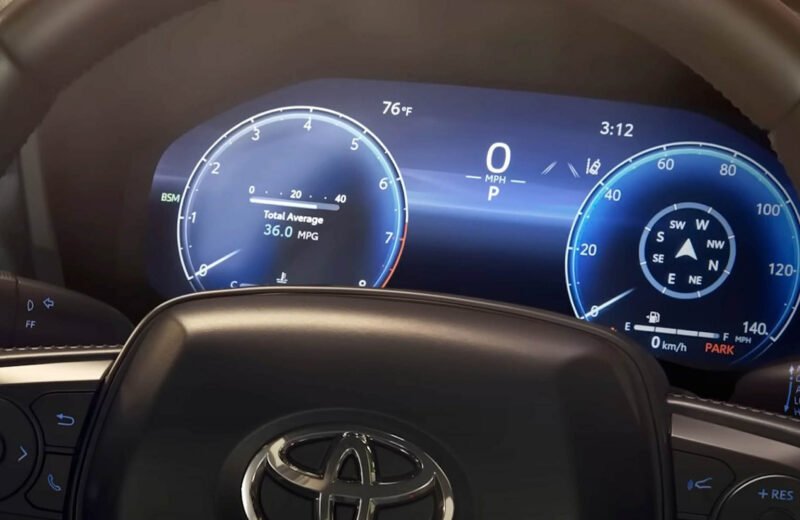Today, INRIX, Inc., a global leader in transportation data and analytics, released the 2023 Global Traffic Scorecard that identified and ranked congestion and commuting trends in nearly 1,000 cities, across 37 countries. New York City once again topped the global ranking, followed by Mexico City and London. U.S. cities held two spots in the top five and four in the top 10.
“Traffic congestion is both a bane and a barometer of economic health; it symbolizes bustling activity yet simultaneously hampers it,” said Bob Pishue, transportation analyst at INRIX. “Reflecting on 2023 and early 2024, the surge in traffic congestion in urban areas indicated a revival of economic hubbub post-COVID, but it also led to billions of dollars in lost time for drivers.” Despite signs of recovery, though, some aspects of the pandemic are sticking around. Pishue continued, “Although congestion is returning to pre-COVID levels, we’re seeing interesting changes in congestion patterns due to the lingering effects of the pandemic. The continuation of hybrid and remote work is creating new travel peaks from what we’ve seen previously.”
America’s Gridlock is Worse Than Ever
New York City is followed by Chicago (96 hours) and Los Angeles (89 hours) as the most congested cities in the United States. This is New York City’s second year in the top spot, despite a 4% reduction in overall congestion. The typical U.S. driver lost 42 hours to traffic congestion and lost $733 worth of time, up nearly $100 from last year.
Table 1: 10 Most Congested Urban Areas in the U.S.
|
2023 US |
Urban Area |
2023 |
Compared |
2023 |
2023 |
Downtown |
Q1 2024 |
|
1 (1) |
New York City, NY |
101 (105) |
11 % |
$1,762 |
$9.1 B |
11 |
-11 % |
|
2 (2) |
Chicago, IL |
96 (87) |
18 % |
$1,672 |
$6.1 B |
11 |
-8 % |
|
3 (3) |
Los Angeles, CA |
89 (78) |
-4 % |
$1,545 |
$8.3 B |
19 |
-5 % |
|
4 (4) |
Boston, MA |
88 (78) |
-1 % |
$1,543 |
$2.9 B |
10 |
-10 % |
|
5 (6) |
Miami, FL |
70 (66) |
18 % |
$1,219 |
$3.1 B |
14 |
-1 % |
|
6 (5) |
Philadelphia, PA |
69 (67) |
2 % |
$1,209 |
$2.9 B |
11 |
-9 % |
|
7 (8) |
Washington, DC |
63 (52) |
-9 % |
$1,095 |
$2.7 B |
11 |
-4 % |
|
8 (7) |
Houston, TX |
62 (55) |
1 % |
$1,082 |
$3.2 B |
17 |
-1 % |
|
9 (9) |
Atlanta, GA |
61 (51) |
-3 % |
$1,066 |
$2.6 B |
16 |
-4 % |
|
10 (12) |
Seattle, WA |
58 (46) |
-11 % |
$1,010 |
$1.6 B |
17 |
-1 % |
In addition to being the most congested urban area, New York City saw a staggering 13% increase in downtown trips in 2023 compared to 2022, followed by Atlanta, Philadelphia, and Washington D.C. (7%). Nine out of 10 of the United States’ largest metros saw a year-over-year increase in downtown trips. Trip analysis also revealed the traditional 9-to-5 workday has transformed into to a new 10-to-4 schedule. The shift in off-peak commuting and workday hours are likely fueled by the continued prevalence of remote and hybrid work.
A New Midday Rush Hour
The uptick in congestion comes alongside the emergence of a new phenomenon: the midday rush hour. As Graph 1 illustrates, morning hourly commute trips in 2023 were down about 12% compared to 2019 and the PM peak (3-6 PM) was down just 9%. However, average hourly traffic during the midday was up an astonishing 23%, a trend that has continued to remain since 2020.
Overall, the data shows that per hour, nearly the same number of trips start during the midday as the evening commute period, typically the most congested period of the day.
The Most Congested Corridors in the U.S.
Across the United States, traffic delays on the busiest corridors have generally improved since 2022. Notably, the highest peak delay in 2023 was 2.5 hours less than the peak delay in 2022. A striking example of changing patterns is the I-4 in Orlando, Florida, which surged from 10th place in 2022 to the top in 2023. During peak hours, drivers lost 31 minutes on the I-4 westbound, on par with Los Angeles’ notorious I-5 congestion.
In Stamford, Connecticut, the I-95 corridor demonstrated significant congestion in both directions, earning it the third and fourth spots on the list of most congested U.S. corridors. Northbound travelers on the 30-mile stretch of I-95 lost an average of 29 minutes daily, while those heading southbound faced a slightly lower but still substantial delay of 28 minutes each day.
Table 1: 10 Most Congested U.S. Roads in 2023
|
Rank |
Urban Area |
Road Name |
From |
To |
Peak Hour |
2023 Peak |
2023 |
|
1 |
Orlando, FL |
I-4 W |
Beachline Expy |
Western Bltwy |
5:00 PM |
31 |
124 |
|
2 |
Los Angeles, CA |
I-5 S |
I-10 |
I-605 |
5:00 PM |
31 |
122 |
|
3 |
Stamford, CT |
I-95 N |
Sherwood Isl Conn |
Warren St |
4:00 PM |
29 |
116 |
|
4 |
Stamford, CT |
I-95 S |
Compo Road S |
Indian Field Rd |
8:00 AM |
28 |
111 |
|
5 |
New York, NY |
I-278 W |
I-495 |
Tillary St |
4:00 PM |
21 |
82 |
|
6 |
Miami, FL |
I-95 N |
NW 46th St |
NW 151st St |
5:00 PM |
20 |
82 |
|
7 |
Boston, MA |
I-93 S |
Zakim Bridge |
Pilgrim’s Hwy |
3:00 PM |
20 |
81 |
|
8 |
Baton Rouge, LA |
I-10 E |
N Lobdell Hwy |
I-12 |
4:00 PM |
17 |
70 |
|
9 |
Stamford, CT |
I-95 N |
Indian Field Rd |
Compo Road S |
5:00 PM |
17 |
68 |
|
10 |
Chicago, IL |
I-94 E |
I-290 |
I-57 |
4:00 PM |
17 |
66 |
Congestion Climbs Worldwide
New York, Mexico City, London, Paris, and Chicago were the top five most congested urban areas in the Global Congestion Impact Ranking. Out of the top 100 ranked urban areas, 98 experienced more delay than in 2022, and in 71 areas, that delay grew by more than 10%. Just under half, however, have reached their 2019, pre-COVID level of delay.
Table 2: 10 Most Congested Cities in the World in 2023
|
2023 |
Urban Area |
Country |
2023 Delay |
Change from |
Change |
Downtown |
Q1 |
|
1 (1) |
New York City, |
USA |
101 |
-4 % |
11 % |
11 |
-11 % |
|
2 (4) |
Mexico City |
MEX |
96 |
13 % |
-11 % |
12 |
-5 % |
|
3 (2) |
London |
UK |
99 |
2 % |
3 % |
10 |
-10 % |
|
4 (3) |
Paris |
FRA |
97 |
4 % |
1 % |
10 |
-3 % |
|
5 (5) |
Chicago IL |
USA |
96 |
10 % |
18 % |
11 |
-8 % |
|
6 (6) |
Istanbul |
TUR |
91 |
12 % |
20 % |
13 |
5 % |
|
7 (7) |
Los Angeles CA |
USA |
89 |
13 % |
-4 % |
19 |
-5 % |
|
8 (8) |
Boston MA |
USA |
88 |
14 % |
-1 % |
10 |
-10 % |
|
9 (13) |
Cape Town |
ZAF |
83 |
32 % |
-10 % |
12 |
7 % |
|
10 (16) |
Jakarta |
IDN |
65 |
33 % |
-24 % |
13 |
16 % |
The Road to Combatting Congestion
Access to reliable data is the first step in tackling congestion. Applying big data to create intelligent transportation systems is key to solving urban mobility problems. INRIX data and analytics on mobility, traffic signals, parking and population movement help city planners and engineers make data-based decisions to prioritize spending to maximize benefits and reduce costs now and into the future.
The key findings of the INRIX 2023 Global Traffic Scorecard provide a quantifiable benchmark for governments and cities across the world to measure progress to improve urban mobility and track the impact of spending on smart city initiatives.


















